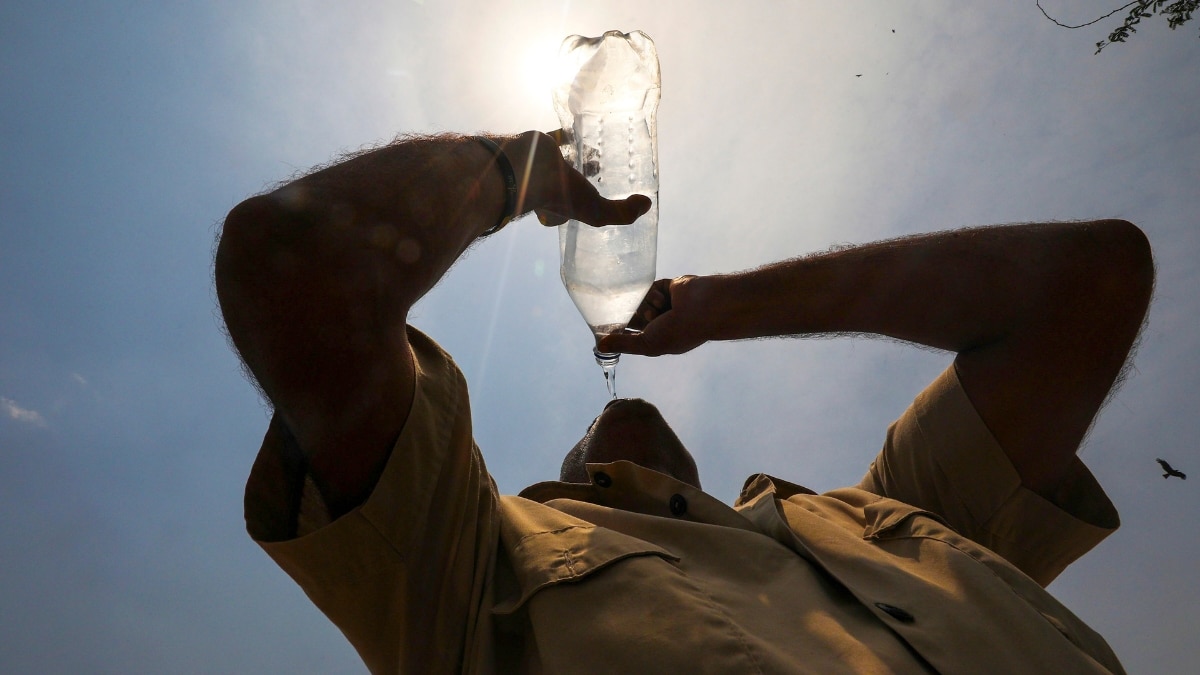New Delhi: It has been traditionally believed that the winter months are bad for respiratory health due to high pollution levels, but a recent study has revealed that rising temperatures during the summer months of April and May can also significantly influence PM2.5 levels. The study found occasional spikes in air pollution across major Indian cities. This new research highlights the impact of higher temperatures on the formation of secondary pollutants, adding another layer of complexity to India’s air quality challenges.
What The Study Says About April-May Temperature
The study by Climate Trends examined the relationship between PM2.5 concentrations and meteorological parameters in Delhi, Lucknow, Kolkata, Mumbai, and Patna, using data from the Central Pollution Control Board (CPCB) and the ERA5 dataset for the years 2022, 2023, and 2024. The findings indicate that higher temperatures lead to the formation of secondary organic aerosols (SOA) from volatile organic compounds (VOCs) and peroxyacetyl nitrate (PAN) from the reaction of nitrogen oxides (NOₓ) with hydrocarbons, both of which contribute to increased PM2.5 levels.
The study says April and May, which usually signal the transition of season from spring to summer, are critical months that greatly influence PM2.5 levels in urban areas. The transition sees an increase in the temperatures and a change in the atmospheric conditions.
The rising temperatures during April and May can lead to photochemical reactions that in turn form secondary pollutants, including secondary organic aerosols that significantly contribute to PM2.5. “The increased solar radiation during these months accelerates these chemical processes, potentially raising PM2.5 concentrations,” the study noted.
ALSO READ ON ABP LIVE | New Study Says How Nights Are Getting Hotter Amid Climate Change, Posing Health Risks
City-Specific Analysis Of PM2.5 Levels And Temperature Variations
Delhi
- PM2.5 concentrations saw a notable reduction of 28.4%, falling from 93.81 µg/m³ in April and May 2022 to 67.19 µg/m³ during the same period in 2023. However, this improvement was followed by a 21.3% increase in 2024, reaching 81.53 µg/m³.
- Average temperatures mirrored these fluctuations, dropping from 32.15°C in 2022 to 28.72°C in 2023, then rising by 11% to 31.87°C in 2024.
Kolkata
- PM2.5 levels initially rose by 28% from 26.50 µg/m³ in 2022 to 33.93 µg/m³ in 2023, but then decreased by 11.3% to 30.10 µg/m³ in 2024.
- Temperature trends remained relatively stable, with a slight decrease from 30.28°C in 2022 to 30.27°C in 2023, followed by a 2.5% increase to 31.04°C in 2024.
Patna
- There were significant fluctuations in both PM2.5 levels and temperatures. After a decrease in PM2.5 from 2022 to 2023, levels rose again in 2024. Temperature patterns followed a similar trajectory, decreasing from 2022 to 2023 and increasing in 2024.
Lucknow
- PM2.5 concentrations saw a substantial reduction of 27.7% from 73.16 µg/m³ in 2022 to 52.87 µg/m³ in 2023, followed by a 17.6% increase to 62.17 µg/m³ in 2024.
- Temperature trends aligned with these changes, showing a decrease from 2022 to 2023 and an increase in 2024, suggesting a correlation between temperature and PM2.5 levels.
Mumbai
- Average temperatures showed a slight decline over the years, from 29.55°C in 2022 to 29.42°C in 2023, and further to 29.20°C in 2024.
- PM2.5 levels decreased from 43.17 µg/m³ in 2022 to 30.84 µg/m³ in 2023, with a further slight decrease to 30.46 µg/m³ in 2024.
ALSO READ ON ABP LIVE | CJI Chandrachud Pitches For Green Courts Amid Climate Change, Recalls Stephen Hawking's Wish At Qutub Minar
Impact Of Summer Pollution On Health
The study underscores the severe health implications of concurrent exposure to high temperatures and elevated PM2.5 levels:
Respiratory Stress: High heat exacerbates respiratory conditions. Combined with PM2.5 exposure, it can reduce lung function by increasing their severity.
Cardiovascular Strain: Both factors independently stress the cardiovascular system, potentially leading to increased heart rate, blood pressure, and inflammation.
Heat-related Illness: Impaired lung function from PM2.5 exposure increases susceptibility to heat-related illnesses.
Crucial To Understand Interplay Between PM2.5 Levels And Temperature: Experts
According to Dr Harshal Salve, Additional Professor of Community Medicine at AIIMS, New Delhi, high pollutant levels such as PM2.5 can worsen respiratory problems and cardiovascular events. “Policymakers must undertake measures that reduce sources of air pollution throughout the year, considering the climate and health co-benefits of air pollution mitigation," he said.
Dr Palak Balyan, Research Lead at Climate Trends, said: "Extreme temperatures can enhance the photochemical reactions leading to the formation of various secondary pollutants. Understanding the interplay between PM2.5 levels and temperature is crucial for developing effective air quality management and public health protection strategies."


